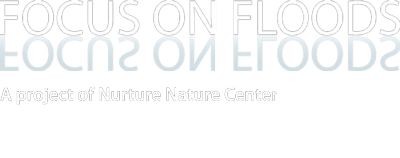Annotated Bibliography of Hazard and Flood-Related Articles
Drobot, S.D., C. Benight, and E.C. Gruntfest, 2007: Risk factors associated with driving through flooded roads. Environmental Hazards, 7:227-234.
The objective of this paper is to assess the social factors that affect whether or not an individual will drive through a flooded road. Surprisingly, research is limiting regarding driving…
Bell, H., 2004: Efficient and effective? the hundred year flood in the communication and perception of flood risk. Graduate School Theses and Dissertations.
This thesis focuses on the issues with flood communication. The author evaluates four methods used to communicate flood risk, including a 100 year flood, a flood with a 1% likelihood…
Morss, R.E., 2010: Interactions among flood predictions, decisions, and outcomes: Synthesis of three cases. Natural Hazards Review, 11(3), 83-96.
The aim of this paper is to showcase the importance of hydrometeorological predictions in the decision making process during floods. Flood forecasts are beneficial to both meteorologists as well as…
Gruntfest, E.C., 1977: What people did during the Big Thompson Flood. Working Paper 32. Institute of Behavioral Science, University of Colorado. 62pp.
The objectives of the study were two-fold. First, public behavior of those in the Big Thompson Canyon during the flood was evaluated. Second, based on the public’s behavior, recommendations are…
Kircher, T., J. Nelson, and J. French, 1987: Avoidance of death and injury through monitoring of dams and flood evacuation in Essex, Connecticut, June 1982. Disasters, 11(2), 117-119.
This study presents a case of successful communication and collaboration among personnel during several flash floods. A period of heavy rain in Essex, Connecticut on the 4th and 5th of…
Haynes, K., L. Coates, R. Leigh, J. Handmer, J. Whittaker, A. Gissing, J. Mcaneney, and S. Opper, 2009: ‘Shelter-in-place’ vs. evacuation in flash floods. Environmental Hazards, 8(4), 291-303.
Evacuation remains the leading action recommended throughout the literature on flash floods. However, this paper argues that sheltering-in-place may in fact lead to fewer deaths in certain situations. The investigation…
Morss, R.E., O.V. Wilhelmi, M.W. Downtown, and E. Gruntfest, 2005: Flood risk, uncertainty, and scientific information for decision making: Lessons from and interdisciplinary project. Bulletin of the American Meteorological Society, 85 (11), 1593-1601.
This paper integrates a variety of researchers including climatologists, hydrologists, engineers, and planners. The aim of the study is to better understand climate change, uncertainty, and hydrometeorology in regards to…
Leik, R.K., M.T. Carter, J.P. Clark, S.D. Kendall, and G.A. Gifford, 1980: Community response to natural hazard warnings. Information for the Defense Community.
This research centered on warning dissemination and community response and included three components. First, field studies of communities that experienced either flash floods, hurricanes, tornadoes, or earthquakes were conducted. This…
Lindell, M. K., and Perry, R. W., 1992: Behavioral foundations of community emergency planning. Hemisphere, Washington, D.C.
This book centers on the integration of research on preparedness and response to emergencies. It focuses on three major themes. The first major theme is directed primarily at local emergency…
Mileti, D. S., and J. H. Sorenson, 1990: Communication of emergency public warnings: A social science perspective and state of-the-art assessment. Oak Ridge National Laboratory Rep. ORNL-6609, 145 pp.
This assessment compiles major findings from over 200 studies on warning systems and warning response. This extensive literature review discusses several main findings. First, how the warning message itself is…
